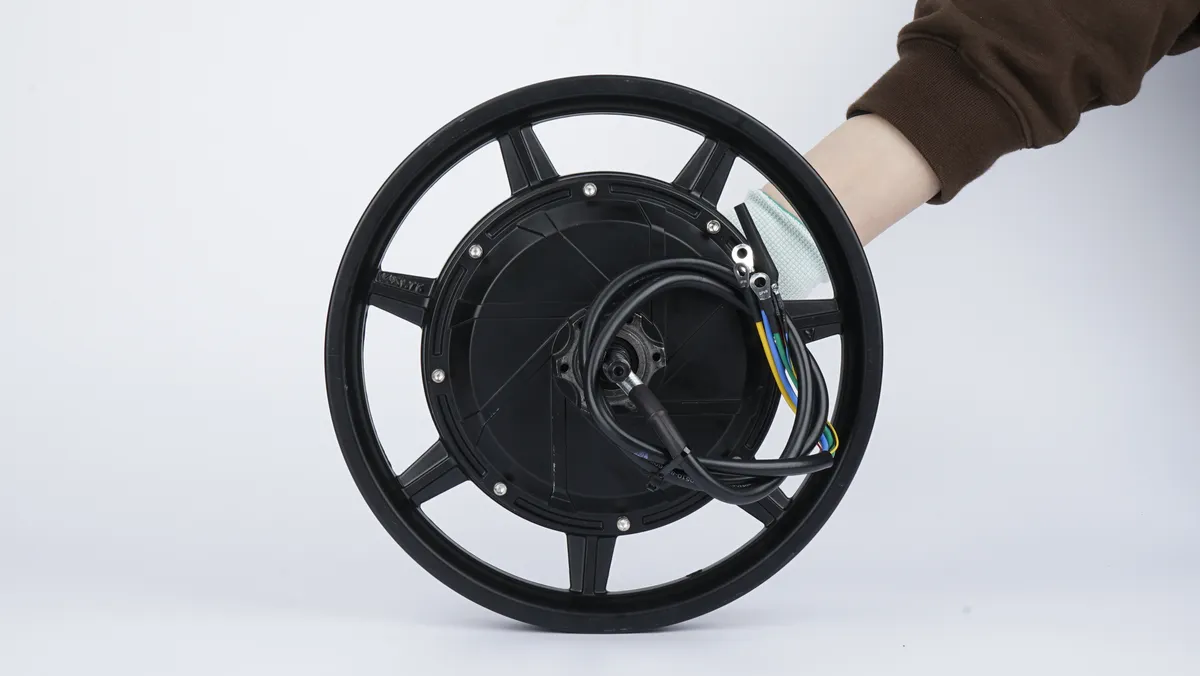The hub motor is a key component of electric vehicles, providing the power needed for motion. As an important part of transportation, one of the most concerning questions for most users is to understand the lifespan of the hub motor and how many miles it can be driven before maintenance or replacement is needed. This article will focus on these questions and explore the hub motor.
The expected mileage of a hub motor may vary depending on the type of vehicle, terrain, and regular maintenance. Generally, most hub motors can continue to operate for 10,000 to 20,000 miles before showing signs of wear, while hub motors with better materials and maintenance can last an average of 20,000 to 30,000 miles. However, this usage figure is just a general guideline, and actual mileage may vary depending on individual usage patterns and environmental factors. For example, vehicles operating in sandy or salty climates may only travel 10,000 miles or less due to increased corrosion risk. Hub motors on vehicles used frequently on a daily basis may also require more frequent replacement. Of course, some people may achieve longer mileage. Lunyee has received feedback from customers who have used Lunyee's hub motors for nearly 40,000 miles, and this number may still be increasing.
Several factors can affect the lifespan of a wheel hub motor. The quality of materials used in manufacturing, operating conditions, maintenance practices, and the workload of the motor all play important roles. High-quality wheel hub motors made with durable components may have a longer lifespan compared to low-quality alternatives. Additionally, regular maintenance practices such as lubrication and temperature monitoring can extend the lifespan of the motor.

The range of a hub motor largely depends on the quality of materials and engineering in the manufacturing process. Motors made with high-grade copper, steel, and magnets tend to have less wear and tear over time compared to low-quality components. Winding design and cooling mechanisms are also crucial – more efficient winding patterns and advanced cooling allow the motor to operate at lower temperatures and reduce performance degradation. In general, hub motors produced by reputable manufacturers using high-quality components are expected to exhibit higher durability.
The driving style of the vehicle also significantly affects the lifespan of the engine. Gradual acceleration and braking put less pressure on the components compared to sudden and aggressive inputs. Similarly, avoiding carrying heavy loads or operating in extremely hot or cold environments can reduce thermal and mechanical stress. Driving calmly on flat roads is less strenuous than constantly going uphill or frequent stop-and-go city driving. Maintaining an appropriate speed based on weather, load, and terrain helps prolong the lifespan of the engine.
Continuous and careful maintenance can maximize the lifespan potential of hub motors. Regularly inspect worn parts, loose fasteners, or fluid leaks to repair them in a timely manner before significant damage occurs. Keeping the motor clean helps with cooling and prevents the accumulation of contaminants. Maintaining proper tire pressure reduces rolling resistance and motor output requirements. Lubricating moving parts according to the manufacturer's specifications prevents corrosion and wear. Addressing issues promptly when they arise can prevent negative impacts from accumulating over time.
In summary, the overall mileage of a vehicle is just a rough number, but the lifespan of any individual wheel hub motor depends on its inherent manufacturing quality as well as operational and environmental factors beyond direct control. Adopting driving practices and maintenance procedures that minimize wear and prioritize early problem detection can maximize the lifespan of the wheel hub motor.
Leave A Comment